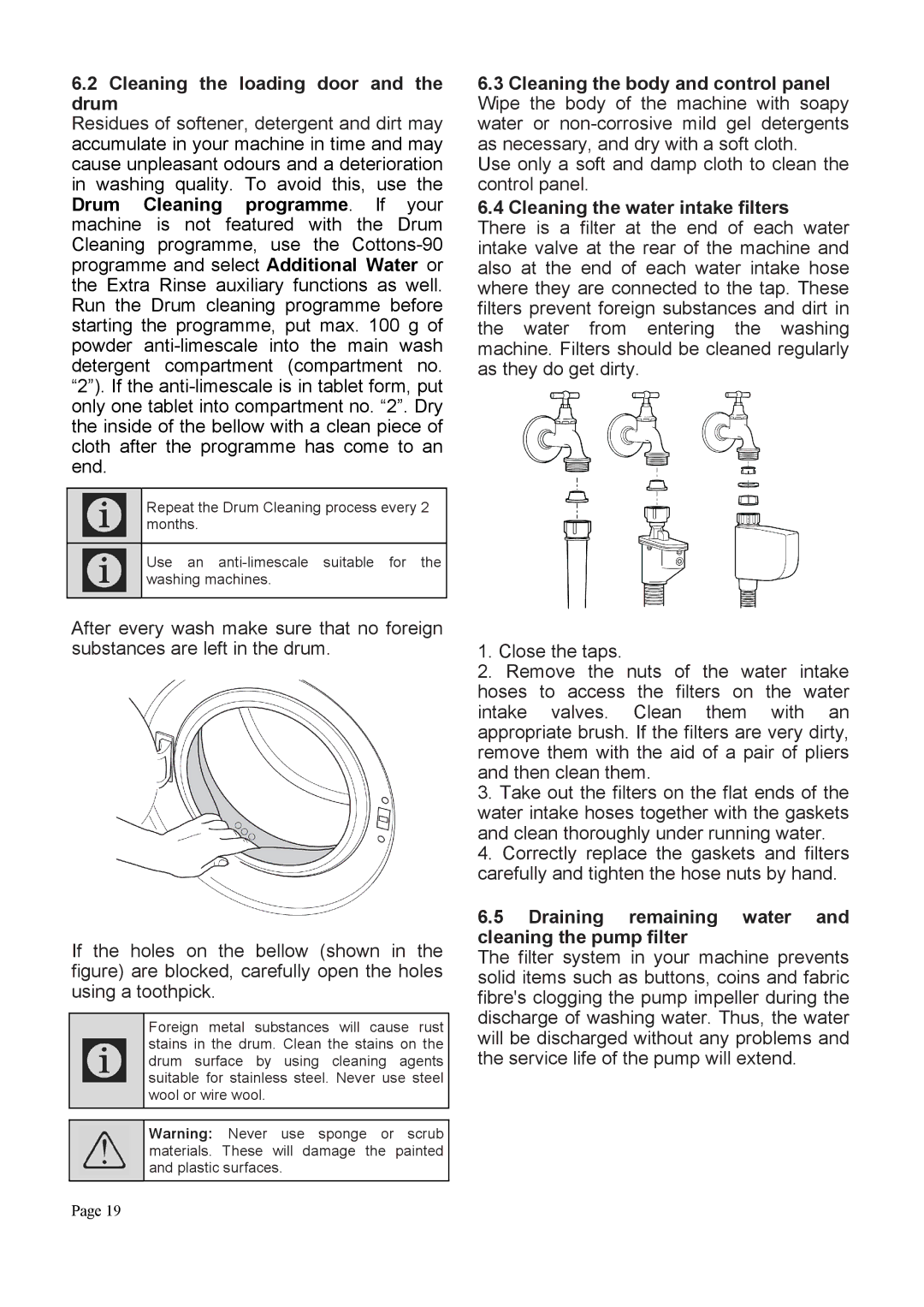
6.2Cleaning the loading door and the drum
Residues of softener, detergent and dirt may accumulate in your machine in time and may cause unpleasant odours and a deterioration in washing quality. To avoid this, use the Drum Cleaning programme. If your machine is not featured with the Drum Cleaning programme, use the Cottons90 programme and select Additional Water or the Extra Rinse auxiliary functions as well. Run the Drum cleaning programme before starting the programme, put max. 100 g of powder antilimescale into the main wash detergent compartment (compartment no. “2”). If the antilimescale is in tablet form, put only one tablet into compartment no. “2”. Dry the inside of the bellow with a clean piece of cloth after the programme has come to an end.
Repeat the Drum Cleaning process every 2 months.
Use an antilimescale suitable for the washing machines.
6.3Cleaning the body and control panel Wipe the body of the machine with soapy water or noncorrosive mild gel detergents as necessary, and dry with a soft cloth.
Use only a soft and damp cloth to clean the control panel.
6.4Cleaning the water intake filters
There is a filter at the end of each water intake valve at the rear of the machine and also at the end of each water intake hose where they are connected to the tap. These filters prevent foreign substances and dirt in the water from entering the washing machine. Filters should be cleaned regularly as they do get dirty.
After every wash make sure that no foreign substances are left in the drum.
If the holes on the bellow (shown in the figure) are blocked, carefully open the holes using a toothpick.
Foreign metal substances will cause rust stains in the drum. Clean the stains on the drum surface by using cleaning agents suitable for stainless steel. Never use steel wool or wire wool.
Warning: Never use sponge or scrub materials. These will damage the painted and plastic surfaces.
1.Close the taps.
2.Remove the nuts of the water intake hoses to access the filters on the water intake valves. Clean them with an appropriate brush. If the filters are very dirty, remove them with the aid of a pair of pliers and then clean them.
3.Take out the filters on the flat ends of the water intake hoses together with the gaskets and clean thoroughly under running water.
4.Correctly replace the gaskets and filters carefully and tighten the hose nuts by hand.
6.5Draining remaining water and cleaning the pump filter
The filter system in your machine prevents solid items such as buttons, coins and fabric fibre's clogging the pump impeller during the discharge of washing water. Thus, the water will be discharged without any problems and the service life of the pump will extend.
PAGE 19
